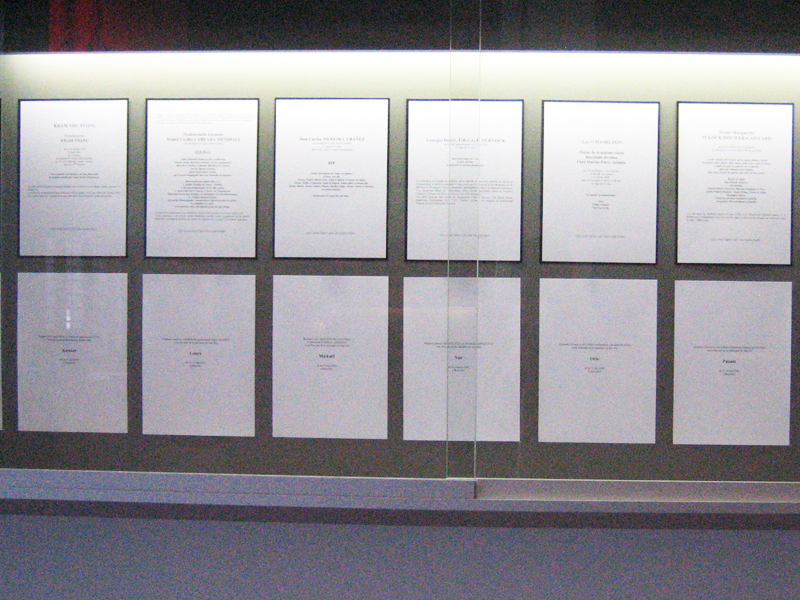Score
—
2008
Three illuminated wooden display cases, painted grey, 200 x 80 x 25 cm, glass, aluminium and 52 announcements
The work initially makes a businesslike, neutral impression. In an elongated display case, which has been painted grey and hung at eye level, a series of black-on-white printed sheets of paper is presented in two horizontal rows, one above the other. At the far right, a space has been left open, as if to indicate that the series is not definitive or complete. The whole is reminiscent of a bulletin board, such as those found in schools or administration buildings. On closer scrutiny, we are looking at twenty-six obituary notices printed in the classic manner, with black lines around the edges, and beneath these, an equal number of birth announcements. They are real life events. For a little under a month, the artist collected official birth announcements and obituaries. For twenty-six consecutive days, he selected one announcement of a death and one of a birth, choosing two people whose first names (for the newborns) or family names (for the deceased) began with the same letter. By arranging the elements in this way and underscoring their relationship to the space, to time and language, Lorand plays with the tension between the general and the specific, between repetition and difference.
The artist moreover imposed upon himself a strict system that is so extreme that it barely leaves space for any personal choice or involvement, for any intentional narrative or discursive coherence. Nonetheless, as we begin to read the announcements behind the glass in the grey cabinet, a great range of colours suddenly opens up. For the newborns, about whom – except for a first name and the identity of his or her two procreators – so little can as yet be said, they are in delicate tints. They are in bolder colours in the cases of the death notices, wherein the tone, the phrasing and the reported individual and place names reverberate with entire lives. In the mind of the viewer, the sober, formal display cases, which are in the form of a triptych and moreover have the dimensions of coffins – something that strikes you later, perhaps, as you start to walk away – unfolds into a an almost baroque tableau, filled with life, suffering and death, which in spite of the profoundly systematic and methodical approach, is something we can never grasp.
—


